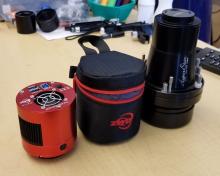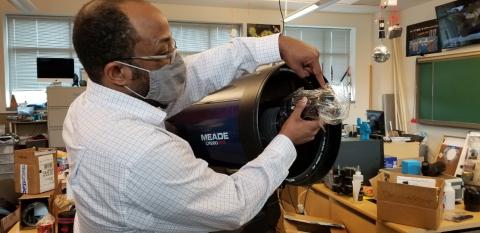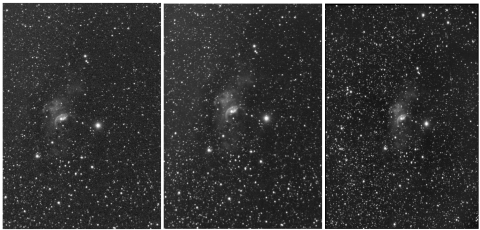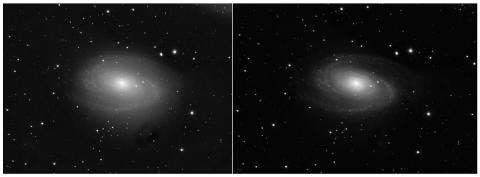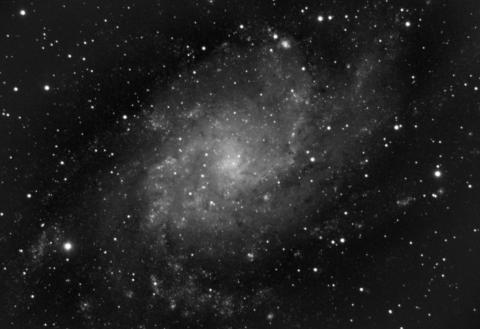Eyes to the Universe | ALPHA Teaser Series #3
February 25, 2022When you imagine an observer using a telescope, you might think they use a conical eyepiece to obtain a zoomed view of the target of interest. However, since the human eye is only sensitive to objects with stellar magnitudes that are 6.5 or lower, a camera would need to be used to obtain such views. For instance, the brightest star in the night sky is Sirius, in the constellation Canis Major, at magnitude -1.46. On the visual magnitude scale, the lower the number, the brighter the object, while higher numbers represent dimmer objects. The dimmest star in the same constellation is SY Canis Major at magnitude 9.5. Thus, to detect fainter objects such as galaxies and asteroids, the ALPHA observatory will instead use a device called a “dedicated CMOS astronomy camera”. This type of device is similar to the cameras in our cell phones but geared towards astronomy applications. This week, the ALPHA observatory ZWO 1600MM cooled monochrome camera arrived and we will begin bench-testing in two weeks. On this teaser episode of the observatory, let’s discuss ALPHA’s “eyes to the universe”.
The ZWO 1600MM camera will be ALPHA’s “eyes to the universe” – this camera will enable operators to view objects as if they were looking through an eyepiece. One of the benefits of a CMOS camera is its ability to detect fainter objects. To assist with the detection of the object, the camera has a built-in cooler, which enables the CMOS chip to be cooled by -25 degrees, the current ambient temperature. The ability to cool the camera is essential – the colder you can make a device, the less thermal noise will be in the images. Due to faint objects, we need to capture multiple images and perform “stacking”. This procedure increases the signal/ratio and aids in pulling out data on the object. The image below demonstrates this. NGC7635, or by its famous name, the “bubble nebula”, is located in the constellation Cassiopeia. The first image is a 120-second image, the second is a 10-minute image, and the third is a 2.5-hour image. As we can see, the more data that is collected, the more detail that can be extracted from the object and less noise will be present in the images.
Calibration Data:
While we are able to cool the camera to lower its thermal noise, we cannot eliminate all thermal noise from the device. To remove unwanted noise from the images, we create calibration data called “dark and bias” frames. A dark calibration frame allows us to create an image that contains remaining thermal noise at a given exposure and temperature. This dark frame is then subtracted from the image. In addition, a calibration frame called a “bias” frame is created. As the camera reads data from each pixel, they will introduce “read” noise. This read noise creates a pattern of various “shades” that can appear on the images. The final calibration data we create is a “flat” frame. As data is taken from the camera, imperfections can be detected, not from the camera device but from the telescope itself. Dust, hair, and other interfering artifacts can appear on the corrector plate of the telescope. At the beginning or end of an imaging session, we create a flat frame that captures the state of the main lens and we can remove any artifacts from the images. Below is an example, from M81 with and without calibration. Notice the image without any calibration added. It contains two small rings – this is dust that has collected on the optics lens and the image now contains bias noise (brighter areas around the center and upper right parts of the image), while the second image shows calibration with all artifacts removed.
Why Monochrome?:
All images generated by ALPHA will be in monochrome (black and white). There are various camera configurations that allow a user to generate a color image – however, they have a drawback. ALPHA’s goal is to detect faint asteroid targets. In order for a color to be generated by the camera, each pixel of the device would have to be divided into a debayer matrix. This means that some pixels will have a green filter, and others will have red and blue. This, in turn, lowers the sensitivity of the camera. To allow maximum sensitivity, ALPHA will use a monochrome camera, which allows each pixel to use 100% of its area to capture light and maximize image captures and quality.
Asteroid detection:
ALPHA’s primary goal will be to detect and perform follow-up studies of asteroids and comets. To perform this, ALPHA will be configured in what is known as “F2 configuration”. The F ratio describes the total magnification of the optical system. In its native F10 configuration, ALPHA’s telescope will have over 2800mm of focal length available. While this may seem advantageous for the telescope, a major drawback with high focal length telescopes is the time required to collect enough light for a given object. Many of ALPHA’s objects are fast moving – thus, if an exposure is long enough, the target of interest would form a “streak” or line across the image. Another drawback of this configuration is the field of view (FOV) is small and thus, the telescope would need to be able to move with the object or else it will move out of the telescope’s view. To resolve this, ALPHA will use the Hyperstar system. The Hyperstar system replaces the telescopes secondary memory and transforms the telescope from a native F10, 2800mm system to a F2, 560mm system. This provides ALPHA with a FOV of ~3 degrees, meaning that in what a F10 system could do in 1 hour, the F2 configuration the system can accomplish in ~25 minutes. ALPHA will remain in the F2 configuration for the majority of its time during high lunar phases, and will switch to a F6.3 configuration for student projects and community outreach events.
Visit our website to learn more about astronautical engineering and Capitol Tech’s other aviation programs. Many of our courses are available both on-campus and online. For more information, contact The Capitol Tech Admissions Team .



